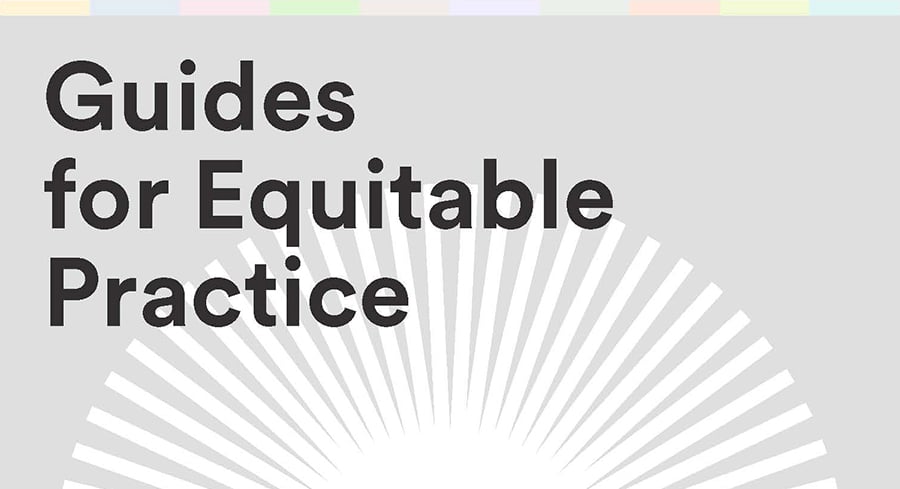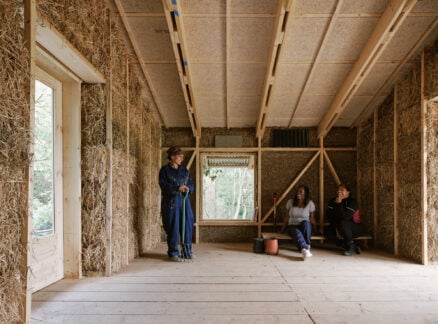
November 29, 2018
Five Takeaways from the AIA’s Guide for Equitable Practice
Today, the American Institute of Architects issued the first of three sets of guidelines on workplace culture. But will it impact the profession for the better?

The American Institute of Architects (AIA) released the first of its so-called “Guides for Equitable Practice” to its members today. This initial chapter—dubbed Part I, with Parts II and III forthcoming—concerns three primary subject areas including “Intercultural Competence,” “Workplace Culture,” and “Compensation.”
“Our goal,” asserts AIA president Carl Elefante, “is to change practice.” All three guides are addressed to individuals, firms, and the profession at large, offering definitions, legal and ethical guidelines, self-assessment questions, and recommended actions.
The guides represent a joint research effort between the University of Minnesota and the AIA’s Equity and Future of Architecture Committee (EQFA). Architects Andrea J. Johnson and Renée Cheng led the research effort at the University of Minnesota. Much of the recommendations are based on existing, open-source guides by Parlour, an Australian platform for women in architecture. But EQFA widened its focus to include facets of equity beyond gender—including race, socioeconomics, ability, and geographic location. Unlike Parlour, the AIA also includes discussions of social justice, implicit bias, and intercultural competence, reflecting current conversations happening throughout American culture.
While it is still unclear how the guides will inform actual policies, if at all, the AIA hopes they will provide the basis for common understanding and discussion at the local AIA chapter or office level. “We start with informed dialogue,” says Robert Ivy, AIA CEO and executive vice president. “It’s not just feeling. It’s not just opinion. It’s based on solid research, concrete suggestions, and real life examples. So there are a variety of opportunities here for a firm to change.”
Against the backdrop of #MeToo developments of the past year, including accusations by five women against Pritzker-laureate Richard Meier, some members of the guidelines’ intended audience may be eager for cultural change at a rate faster than the AIA, as a national institution, can provide. But the AIA sees it as a stepwise initiative. “We have to try to be an institute for everyone,” says Elefante. “We recognize that on one hand there are people who are less patient, and on the other there are people that these guides will be pushing to do things quicker. There’s a spectrum out there. That spectrum is part of the profession.”
At the moment, the 98-page Part I is available for AIA members only, says Ivy, calling early access a “benefit of membership,” but the AIA plans to make it publicly available in early 2019.
Here is an exclusive first-look at five significant recommendations from the AIA’s Guides for Equitable Practice, Part I.
1. Are you a person or a firm? This guide is for you.
Each guide contains a section entitled “Act,” addressed separately to individuals, firms, and the profession at large. For example, the “Intercultural Competence” chapter suggests that individuals “investigate your instincts—learn how to correct your own biased thinking and actions” and “respect everyone’s personal lives and responsibilities when determining job assignments,” among other recommendations which are each elaborated upon further. In the same section, the guide advises firms to “take a detailed inventory of your organization’s patterns and practices” and “consider the role of dominant-culture identities in your policies and practices.”
There is some audience crossover between these sections. Actions for individuals are broken into advice for every employee, as well as specifically for those in management roles. Actions for firms, meanwhile, also address firm leaders.
But does addressing individuals place undue burden on employees to change their work culture—especially where power dynamics are unequal? EQFA chair Emily Grandstaff-Rice acknowledges, “I personally have felt that burden,” but “the reason [we address individuals as well as firms] is because we frankly need all the voices at the table to change the culture.”
2. In a #MeToo era, not all firms have gotten on board.
The guides call sexual harassment “pervasive” in U.S. workplaces and state that approximately two-thirds of architecture professionals have experienced sexual harassment while working. In other words, the stakes are high.
While the guides place an emphasis on the experiences of women and feminine-presenting people rather than on other groups, such as queer, nonbinary, or male, they clarify that the #MeToo movement “spans gender, race, ethnicity, sexual orientation, household income levels, disability, age, and regions.”
In June, the AIA passed an amendment to its code of ethics—initiated by former AIA New York president Frances Halsband—that for the first time explicitly called on members “to prohibit abuse and harassment within our professional community.” The AIA self-references this rule in the “Intercultural Competence” guide’s section on discrimination.
Importantly, the guide underscores that a huge challenge to addressing sexual harassment is structural. For those who cannot take sexual harassment claims to their employers—either because they work for small firms without clear policies or support, or because their harasser would also be their supervisor, the “Workplace Culture” guide suggests taking prompt legal action, whether that means filing a complaint with the Equal Employment Opportunity Commission; contacting Fair Employment Practices Agencies at the state, county, or city level; working with local human-rights agencies; or seeking independent legal assistance.
3. When it comes to fair pay, there’s an elephant in the room: money.
The “Compensation” portion lays out a major challenge to equitable practice: “The depressed value of architectural services in our current society prompts firms, at times, to make tough choices in order to survive.”
Some groups feel the effects more than others. For example, women are more likely to be caregivers of children or aging relatives than men. One interviewee quoted in the guide offered her perspective: “There are basic economics behind why some firms can’t support new parents in general—they run at zero profitability once salaries are paid, so it’s really hard to support parents who want to leave and come back and get supported as overhead while they’re gone. It needs to be a complete mind shift.”
The guide advises individuals to be “diligent in taking steps to help increase equity” and advocates that firms implement transparent, clearly communicated policies and processes in compliance with federal, state, and professional regulations. In general, the guide champions the idea that investing in diversity, equity, and inclusion can be good for business. It also stresses that compensation is not limited to monetary pay, but also includes employee benefits, educational opportunities, and so on.
To address compensation discrimination, the guide provides clear guidelines on policy and protocol to prevent and respond to violations.
4. Student loans are barriers to entry and advancement. What to do is unclear.
The “Compensation” guide also devotes a paragraph to parsing how debt—especially student loan debt—affects individuals variously depending on race-, socioeconomic-, and gender-related factors. The guide doesn’t sugarcoat the burden of student debt: “Lower pay scales in architecture compared to other professions make justifying staying on or even choosing to enter the profession more difficult.”
While the guide does not suggest specific actions for individuals or firms to take to address these disparities, its inclusion of debt underlines that already disadvantaged groups are even more economically vulnerable to pay inequity.
5. To shift the culture, add open discussions and anonymous surveys to your toolbox.
The “Workplace Culture” guide devotes three pages to unpacking dominant culture in architecture, going beyond the stereotypical image of an older white male architect to discuss age, authorship, class, core values, gender roles, relationship to authority, and work ethic, among other aspects.
At the firm level, the guide suggests a mixture of discussions with leadership, observation, cultural surveys, open discussions, and means to provide anonymous feedback. Among questions that firms should ask: How do you negotiate diversity in your workplace? What behaviors are rewarded? Who shapes culture? Who benefits from the culture, and who is disadvantaged? How do cultures of your clients affect your firm culture?
It is easy to imagine mid-to-large-sized firms creating surveys and discussion groups based on the guides’ recommendations, and in fact a number of firms or groups within firms already undertake similar efforts. But it is less clear how small firms—some of which may consist of fewer than five employees—should implement these changes.
Part II of the “Guides for Equitable Practice”—to be released at an unspecified, future date—will present “Recruitment & Retention,” “Negotiation,” and “Building Relationships,” while Part III will address “Managing a Career,” “Engaging Communities,” and “Assessing & Measuring.”
“My hope is that these guides signal to future and current architecture professionals that we have some work to do, and that this is good work,” says Grandstaff-Rice, who was part of the earlier AIA task force that called for the creation of such recommendations. “It will create better architecture that is empathetic, doesn’t isolate, and celebrates a larger community.”
You may also enjoy “The 2018 Equity in Architecture Survey Encourages Industry Soul-Searching.”





